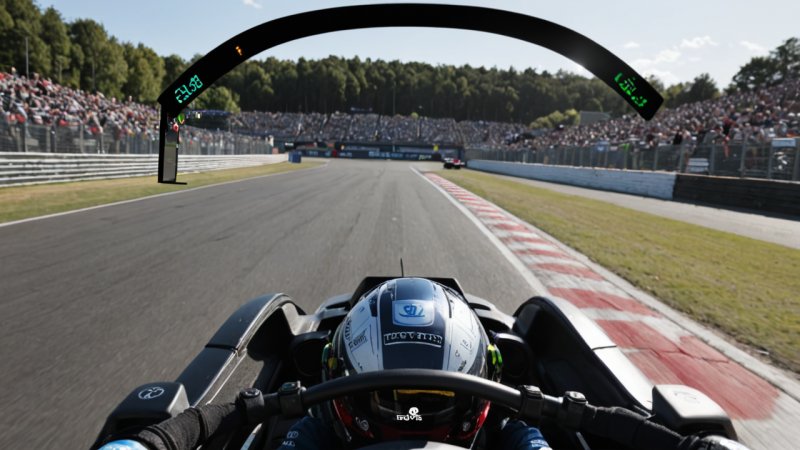In the high-octane world of motorsports, visibility is paramount. Drivers face various conditions that challenge their ability to see the track, other competitors, and potential hazards. With advancements in technology, the ways to improve visibility have evolved, leading to enhanced safety and performance on the track. This article will compare two key technologies that have emerged in motorsports: advanced helmet visors and heads-up display (HUD) systems. We will delve into their benefits, limitations, and how they contribute to driver visibility.
Advanced Helmet Visors
One of the most crucial components for driver safety and visibility is the helmet visor. Advanced helmet visors have undergone significant technological advancements, offering features that enhance clarity and reduce glare.
Pros of Advanced Helmet Visors
- Enhanced Clarity: Many modern visors are made from high-grade polycarbonate materials that provide a distortion-free view, allowing drivers to see the track more clearly.
- Anti-Fog Coatings: Technologies such as anti-fog treatments help maintain visibility in humid or wet conditions, which is essential during races.
- UV Protection: Advanced visors often come with UV protection, shielding drivers' eyes from harmful rays while maintaining visibility.
- Customization: Manufacturers now offer tinted visors that can be tailored to specific lighting conditions, helping drivers adjust to varying environments.
Cons of Advanced Helmet Visors
- Limited Field of View: While visors enhance visibility, they can also limit peripheral vision, which can be critical when navigating tight turns or crowded tracks.
- Replacement Costs: High-performance visors can be expensive to replace if damaged, adding an extra financial consideration for teams.
- Weight: Heavier visors may add weight to the helmet, which could affect a driver’s comfort over long races.
Heads-Up Display (HUD) Systems
In addition to helmet visors, heads-up display systems have emerged as a cutting-edge technology that significantly enhances driver visibility and situational awareness. HUD systems project important information directly onto the driver's line of sight.
Pros of HUD Systems
- Real-Time Data: HUD systems provide real-time information such as speed, lap times, and engine performance, allowing drivers to make informed decisions without taking their eyes off the track.
- Enhanced Situational Awareness: With the ability to display data on the windshield, drivers can keep track of their surroundings and other competitors more effectively.
- Customizable Alerts: Drivers can set alerts for various parameters, ensuring they are aware of critical changes without needing to look down at dashboard instruments.
Cons of HUD Systems
- Distraction Risks: While HUDs aim to enhance visibility, they can also become a distraction if too much information is displayed at once.
- Cost and Complexity: HUD systems tend to be more expensive and complex to install and maintain compared to traditional helmet visors.
- Dependency on Technology: Over-reliance on HUD systems might impair a driver's ability to gauge conditions without digital assistance.
Comparison Summary
When comparing advanced helmet visors and heads-up display systems, it is clear that both technologies play vital roles in enhancing driver visibility in motorsports. Advanced helmet visors offer a straightforward, low-tech solution that improves clarity and protects against environmental factors. However, they may limit peripheral vision and can be costly to replace. In contrast, HUD systems provide a wealth of information directly in the driver’s line of sight, enhancing situational awareness and decision-making. Yet, they come with the risk of distraction and a higher cost of implementation.
Conclusion
Ultimately, the choice between advanced helmet visors and heads-up display systems may depend on the specific needs and preferences of the driver and their team. For those prioritizing simplicity and direct eye protection, advanced visors remain an essential component of driver safety. On the other hand, teams seeking a technological edge and greater situational awareness might find HUD systems to be indispensable. As motorsports continue to evolve, both technologies will undoubtedly contribute to safer racing environments while enhancing driver performance.






